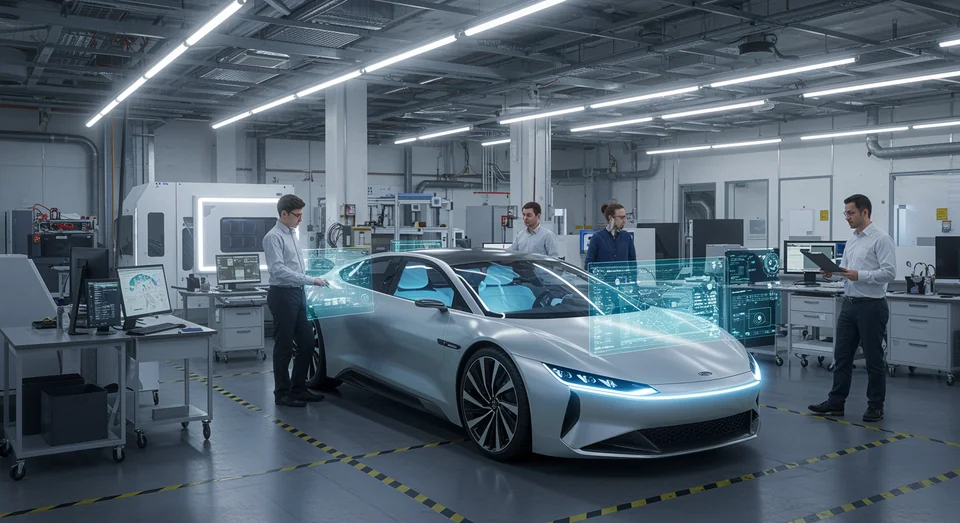Vehicle Interface Processors Revolutionize Automotive Innovation with Smarter, Safer Driving Experiences
252 views
The automotive industry, long a crucible of innovation, is undergoing yet another seismic shift, this time driven by the transformative potential of Vehicle Interface Processors (VIPs). These cutting-edge systems, seamlessly integrated within System-on-Chip (SoC) frameworks, are redefining how vehicles think, respond, and connect. By consolidating an array of digital functions into a single processing hub, VIPs are not just streamlining operations but are also setting the stage for smarter, safer, and more intuitive driving experiences.

The Dawn of Smarter Mobility: How VIPs Are Redefining the Road Ahead
At the heart of this technological renaissance lies the ability of VIPs to merge efficiency with intelligence. Traditionally, vehicles relied on a web of separate processors to manage everything from infotainment to safety features. This fragmented approach, while functional, often resulted in latency issues, inefficiencies, and increased system complexity. VIPs, however, have turned this paradigm on its head by integrating all these tasks into a unified processing unit. The result? A vehicle that not only processes information faster but does so with remarkable precision and adaptability.
One of the most compelling aspects of VIP technology is its capacity to enable real-time decision-making through advanced features like sensor fusion and edge computing. By synthesizing data from multiple sources—be it cameras, radar, or lidar—VIPs allow vehicles to "see" and "think" in ways that were previously unimaginable. Imagine a car that can instantly detect a pedestrian stepping onto the road, calculate the optimal braking force, and execute the maneuver—all within milliseconds. Such capabilities are no longer the stuff of science fiction but are rapidly becoming a reality, thanks to VIPs.
Beyond safety, these systems are also revolutionizing the in-car experience. Infotainment, once a secondary consideration, has now become a focal point for automotive innovation. VIP-driven systems offer split-screen navigation, augmented reality displays, and ultra-fast multimedia processing, creating a seamless blend of entertainment and utility. Personalized user profiles further enhance this experience, allowing drivers to customize everything from seat positions to climate settings with a mere touch or even a voice command. The integration of biometric monitoring adds yet another layer of sophistication, enabling vehicles to adjust their dynamics based on the driver's stress levels, fatigue, or even heart rate.
For electric vehicles (EVs), the impact of VIP technology is particularly profound. By optimizing energy use and managing battery performance in real time, these systems extend driving range while reducing wear and tear. This not only addresses one of the most significant barriers to EV adoption—range anxiety—but also contributes to a more sustainable future. As Ravinder Katla, a leading expert in automotive technology, aptly notes, "VIPs are not just enhancing vehicle performance; they are fundamentally reshaping what we expect from our cars."
Connectivity, too, has reached new heights. VIPs enable seamless smartphone mirroring, hands-free controls, and over-the-air updates, ensuring that vehicles remain as current as the devices we carry in our pockets. Robust cybersecurity protocols further protect these systems from potential threats, safeguarding both data and driver safety. In an era where digital vulnerabilities can have real-world consequences, this emphasis on security is not just prudent but essential.
What sets VIP technology apart is its scalability and potential for standardization. As the automotive industry grapples with the complexities of modern vehicle design, the VIP-on-SoC approach offers a streamlined solution. By reducing the number of individual components and simplifying system architecture, manufacturers can lower production costs while delivering a superior product. This efficiency is likely to make VIPs a cornerstone of next-generation automotive design, much like anti-lock brakes or airbags in their time.
Yet, as with any technological leap, challenges remain. The integration of VIPs requires significant investment in research and development, as well as collaboration across industries. Automakers, semiconductor manufacturers, and software developers must work in concert to ensure that these systems meet the rigorous demands of real-world driving. Regulatory frameworks will also need to evolve to address the unique considerations posed by such advanced technologies.
Looking ahead, the implications of VIPs extend far beyond individual vehicles. As cities move toward smart infrastructure and autonomous transportation, the data-processing capabilities of VIPs could play a pivotal role in enabling vehicle-to-everything (V2X) communication. This would allow cars to interact not just with each other but also with traffic lights, road signs, and even pedestrians, creating a more connected and efficient transportation ecosystem.
In many ways, VIP technology represents a microcosm of the broader trends shaping the automotive landscape: a shift toward integration, personalization, and sustainability. By consolidating functions, optimizing performance, and enhancing user experience, these systems are not just making vehicles smarter—they are redefining what it means to drive in the 21st century.
As the industry accelerates toward this new horizon, one thing is clear: the road ahead will be shaped not just by horsepower or torque but by the intelligence embedded within every line of code and every circuit. And in this brave new world of automotive innovation, VIPs are poised to take the driver's seat.
